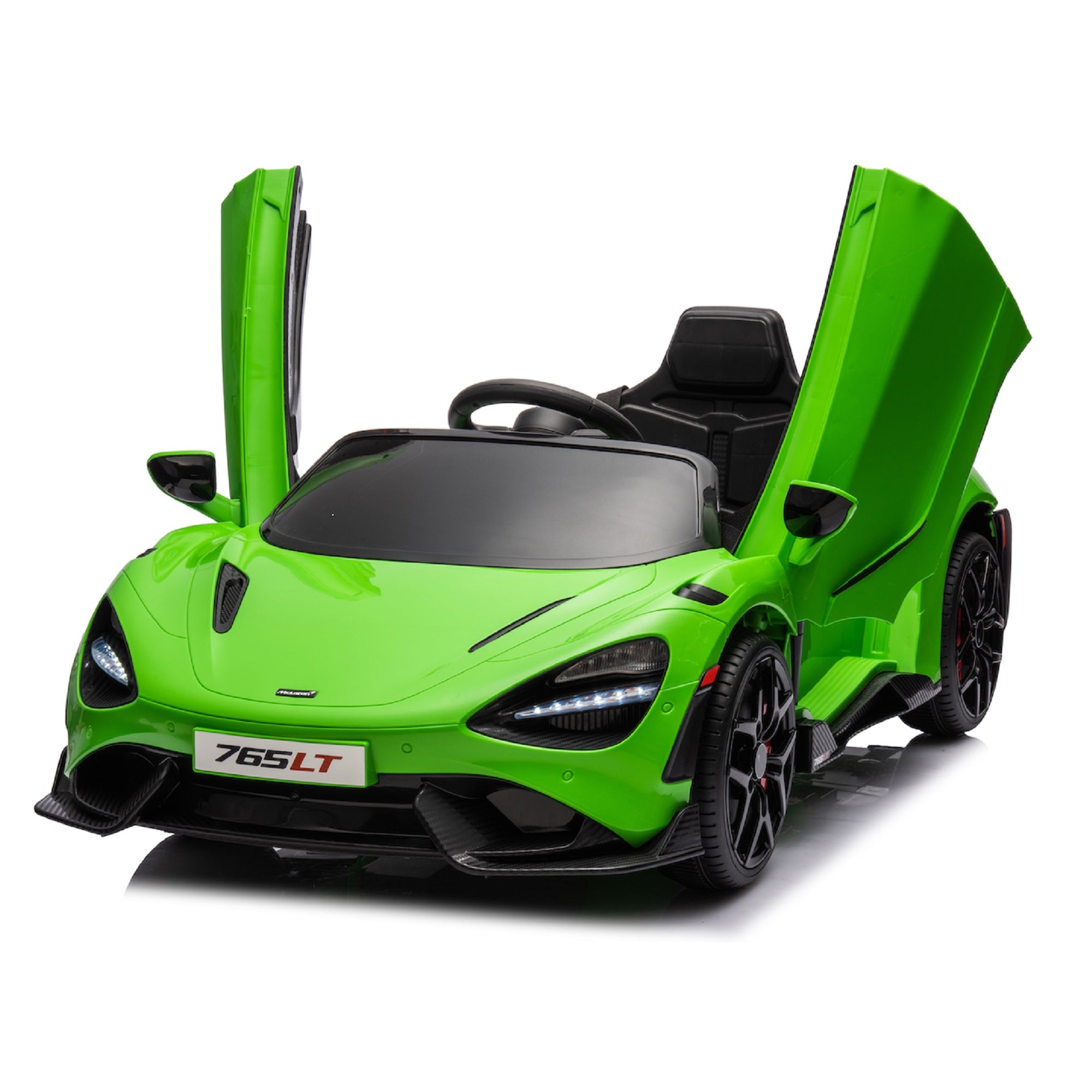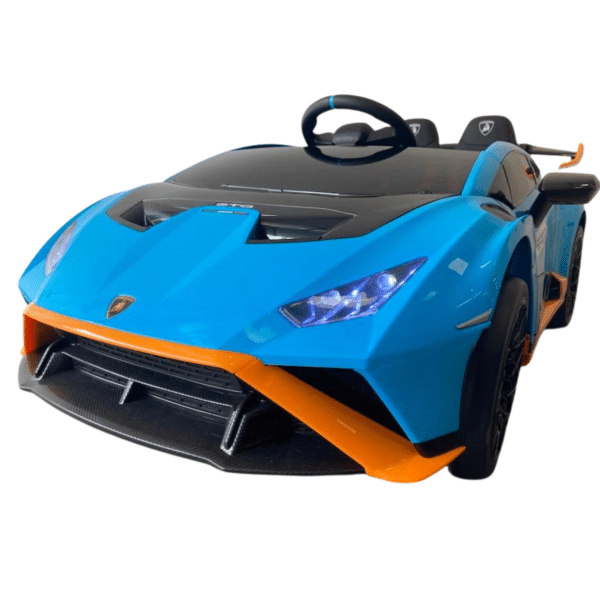Good Facts On Deciding On Kids Ride On Cars
Good Facts On Deciding On Kids Ride On Cars
Blog Article
What Do I Need Know About Battery Life And Charging Times Of An Electric Ride-On Kids Car?
Understanding the battery's time and the life span of an electric kid's car is essential to ensure that your child is able to have an enjoyable and safe journey. What do you need to know the battery type
The majority of electric vehicles for children are rechargeable and make use of lithium-ion or lead-acid battery. Lithium-ion batteries typically have longer battery life and faster charging times than lead-acid batteries.
Capacity of Battery -
The battery capacity, measured in ampere-hours (Ah) or watt-hours (Wh) will determine how long the ride-on car can operate on a single charge. Batteries with higher capacity provide longer duration between recharges.
Run Time -
This is the length of time that an electric ride-on will run for after one charge. This is contingent on a range of elements such as the battery, the motor as well as the terrain and the weight of the rider.
Common electric ride-on vehicle run times range between 30 minutes to 2 hours per charge. Some batteries with a high capacity may provide more time for running.
Charging Time
The time for charging is the time required to fully recharge the battery after depletion. The charging time can differ based on the battery's capacity, charger specs, and charging technique.
In general, the charging times for electric ride-on cars range between 8 and 12 hours for a full charge. Certain models can charge faster speeds, especially with lithium ion batteries.
The battery's longevity and safety is ensured by adhering to the manufacturer's charging instructions. The performance of the battery and its lifespan can be negatively affected by either overcharging it or undercharging it.
Method of Charging
Electric ride-on vehicles typically include a charger which plugs into a household outlet. Some models come with fast-charging features or a smart charger which examines the status of the battery, and then adjusts the charging rate accordingly.
To prevent any damage to the electrical system or battery make sure that the charger and port are compatible with chargers provided by your ride-on vehicle.
Batteries Additional
Some electric cars permit the purchase of extra or extra batteries. This could extend duration of play. You can replace the old batteries with new ones fully charged, so you'll have less time between sessions.
When you know the charging duration and the battery life of an electric vehicle for children you can enjoy endless hours of play and adventure. The battery's performance and longevity will be increased by regularly charging the batteries and following proper charging methods. Check out the top electric kids cars for website advice including ride on digger, toy car, 2 seater electric cars, race car toy, pedal car, kidscars, remote control childrens car, toy cars toy car, digger ride, race car toy car and more. . 
What Are The Maintenance And Assembly Requirements For Kids' Ride-On Cars?
Kids' ride-on cars usually require periodic maintenance and assembly to ensure their performance is optimal, safety, and longevity. These are the assembly requirements and maintenance requirements for children's rides on vehicles.
The majority of ride-on vehicles arrive in an unassembled state and need to be assembled upon the arrival. Attaching the wheel, steering wheel, seats and other accessories to the ride-on car in accordance with the specifications of the manufacturer is the most popular method.
Follow the assembly guidelines carefully, ensuring that all components are securely attached and aligned properly. Make use of the tools and hardware provided to complete the process.
Cleaning -
To keep your ride-on car in pristine condition and operating efficiently, it is essential to keep it clean. Use a dampened soft cloth using mild soap and water to clean exterior surfaces.
Pay attention to areas that are susceptible to accumulation like the tires, wheels, and undercarriage. Make use of a toothbrush or a brush to clean hard-to-reach places and get rid of stubborn dirt.
Utilizing harsh chemicals, abrasive cleaning agents or high pressure water sprays could damage paint or electronic components of the ride-on vehicles.
Battery Care -
The battery of the car that rides on it must be maintained in a way to ensure that it operates efficiently and lasts for as long as is possible. Follow these tips regarding battery care
Charge the battery fully both before use and each time to extend the runtime.
Beware of overcharging the battery or leaving the battery connected to the charger for extended durations, since this could cause damage to the battery and decrease the battery's lifespan.
When not in use, store the ride-on car and the battery in a dry, cool area far from direct sunlight.
If necessary you need to clean the terminals, use the help of a wire brush or terminal cleaner if they are corrosion-prone.
Replace the battery when it's not holding a charge or if you notice evidence of damage.
Tire Maintenance -
Check your tires regularly for signs like wear, damage or a loss of air. Use a bicycle compressor or air pump to fill the tire to the pressure recommended by the manufacturer.
Check the tread pattern of your tires to identify obstructions and foreign matter that can cause flats or punctures. Removal of obstructions and replacement of damaged tires or fixing them if required.
Lubricate the axles, wheel bearings, and other parts to ensure smooth rotation.
Occasional repairs or replacements
Even with routine maintenance, it's likely that the ride-on vehicles need to be fixed or have parts replaced because of wear and tear or accidents.
Watch out for indications of malfunction or deterioration like unusual sounds or power loss or erratic behavior. You can consult the user manual or call customer support to get help in troubleshooting and repair.
To avoid further damage replace damaged or worn-out components as soon as you can to ensure security and function.
You can make sure your child's rideon car is in good working order by adhering to these assembly and maintenance guidelines. Your child can look forward to many hours of safe, fun and exciting playing time. Have a look at the recommended click here about remote control childrens cars for blog recommendations including remote control childrens electric cars, childrens digger, ride on toy, a toy car, ride electric car, two seater childrens electric cars, lambo toy car, childs ride on car, ride on digger, toy car and more. . 
What Should I Think About Prior To Buying An Electric Kids Car? What Are The Pros?
Before buying an electric kids vehicle, there are several factors to consider to ensure you pick the correct model for your child's needs and needs. Here are some important aspects to take into consideration and some information on prices, size, pros and cons.
Consider the size and age of your child's when selecting an electric kids' car. The size and the age of your child will decide the type and model you pick.
Car dimensions and weight
Electric cars for kids come in a variety of dimensions. The range of sizes is from micro-sized replicas to larger-scale replicas. The size and weight of the car should be considered according to your child's age and height as well as their the strength of your child. Also, consider the space for storage or play.
Price Variation
The prices of electronic kids' automobiles can differ widely based on factors like size, features, brand, and the build quality. The prices of small-sized models vary from $50 to 200 in comparison to larger-scale replicas can range from $600 to $800.
The Pros and Cons of -
Pros -
Electronic Kids' Cars These cars are ideal to play with and are great for imaginative games. Kids can experience the thrill of having their own vehicle.
Motor Skill Development. Operating an electric car helps children to develop coordination skills, spatial awareness and fine motor skills.
Outdoor Play - Electric cars encourage outdoor activity and play. This promotes exercise and exploration.
Realistic Details - Many electric kids' cars have realistic features like working headlights, MP3 player compatibility and the sound of the horn. These features improve the playing experience.
Cons
The best electric cars for kids cost a lot, particularly when you select authentic replicas.
Battery life – Electric cars use rechargeable batteries to power their motors, but these batteries may have limited runtimes and require frequent recharging.
Safety Issues Electric vehicles are susceptible to hazards for safety like accidents, falls, and entrapment. This is particularly the case in the event that the vehicle isn't operated with caution and under adult supervision.
Maintenance and assembly - Certain electric car require assembly when they arrive and ongoing maintenance. This entails cleaning, battery maintenance and periodic repairs or replacements.
Features and Accessories
Take note of the features and accessories available with the electric children's car like working headlights, horn sounds as well as parental remote control seat belts, as well as storage compartments. Pick a car with features that suit your child's preferences and interests.
In the end, the ideal electric vehicle for your child will depend on factors like their size, age, and interests, and your budget. Make sure you research, compare the models review them, and consider the pros and cons before making your decision. Take a look at the top kids ride on cars kidscars.co.uk recommendations for website advice including childs car toy, kidscars, digger ride, electric rideons, kiddies cars, electric ride on, toy a car, digger ride, pedal car, toy ride and more. .